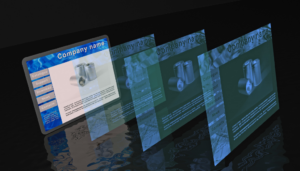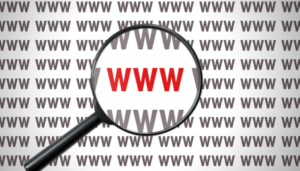
Best Writer Sites Focused on UX
Creating an effective landing page is crucial for writers, especially when launching an eBook. A good landing page doesn’t just look good; it needs to deliver an exceptional experience for users (UX). Writers who master the art of designing user-focused eBook landing pages can significantly boost engagement, sales, and brand loyalty.
This blog will guide you through the essentials of eBook landing pages, provide expert-backed best practices, and recommend some of the best writer-focused tools and sites that excel in UX. Whether you’re an aspiring writer, a freelance blogger, or a content creator, this is your go-to resource for standing out online.
What Is an eBook Landing Page?
An eBook landing page is a dedicated webpage designed to promote and drive conversions for your eBook. Unlike a generic homepage, it’s tailored specifically to sell or distribute your eBook. It often includes:
- Attention-grabbing headlines that align with the eBook content.
- Engaging visuals, including a cover mockup of the eBook.
- Brief descriptions highlighting the eBook’s value.
- Call-to-action (CTA) buttons to download, purchase, or learn more.
- Forms for capturing leads, like email addresses.
Its purpose is simple yet impactful—to drive visitors toward a single action, such as downloading your eBook or purchasing it.
Why Do I Need an eBook Landing Page?
You might be wondering why an eBook landing page is necessary when you already have a website. Here’s why it’s essential:
1. Focused Messaging
An eBook landing page eliminates the distractions of a full website. It delivers targeted messaging so your audience knows exactly what their next steps are.
2. Higher Conversion Rates
Since all elements of the landing page are tailored toward one action, it leads to higher conversion rates. Users are more likely to download or buy your book when distractions are minimized.
3. Professional Branding
A visually appealing, professional landing page boosts your credibility as an author. It creates a great first impression and reflects positively on your expertise.
4. Marketing Insights
With tools like Google Analytics or heatmaps, you can track how users interact with your landing page. These insights help refine your messaging and design for future projects.

How Do I Create an eBook Landing Page?
Step 1: Identify Your Target Audience
Ask yourself, “Who will benefit most from my eBook?” Tailor your language, imagery, and CTAs to their preferences and pain points.
Step 2: Choose a Landing Page Builder
Use tools like Unbounce, Leadpages, or Instapage for user-friendly templates. For authors looking to simplify the process, consider platforms like Eugene, which specialize in book-related landing pages.
Step 3: Develop a Strong Value Proposition
Clearly explain what readers will gain by downloading or buying your eBook. For example, will they learn to write better, achieve personal growth, or gain industry insights?
Step 4: Add Social Proof
Include testimonials, reviews, or media mentions to build trust and credibility.
Step 5: Optimize for Mobile
With more than 60% of internet traffic coming from mobile, ensure your landing page is responsive and easy to use on smaller screens.
5 eBook Landing Page Best Practices
Here are five tried-and-true strategies to help you create a landing page that delivers exceptional UX.
1. Keep Clarity
Avoid clutter and focus on communicating your message clearly. Use concise headings, bullet points, and simple language that readers can skim.
For instance:
Skip this: “This eBook will dramatically transform the way you think, act, and work in ways you never imagined!”
Use this instead: “Learn 5 proven strategies to enhance productivity in your daily life.”
2. Create Strong CTAs
Your call-to-action should be clear, actionable, and prominent. Use action-driven words like “Download Now”, “Get Your Free Copy”, or “Unlock Access Today.”
Example:
Place a bright button in the center of the page to prevent users from searching for the CTA.
3. Include High-Quality Visuals
Visual content is critical for making a positive first impression. Use:
- Professional mockups of your eBook cover.
- Eye-catching graphics or illustrations.
- Videos explaining the book’s value.
Example:
Use a hero image of your eBook against an elegant background to immediately capture attention.
4. Establish Credibility
Showcase your expertise with social proof:
- Add snippets from reviews or endorsements by credible figures.
- Highlight metrics like “5,000 readers and counting!”
- Mention media features or collaboration with respected brands.
5. Write Catchy Content
Your headline, subheadings, and body copy should grab attention and spark curiosity. Use words that resonate with your readers’ challenges or desires.
Example:
Headline: “Struggling to Start? Master Freelance Writing in 30 Days!”
Subheading: “Download this eBook to identify niches, attract clients, and boost your income.”
What to Avoid While Creating eBook Landing Pages?
Even the best intentions can go awry. Avoid these pitfalls to keep your landing page user-focused:
- Overloading with Text: Keep information concise.
- Generic CTAs: Replace vague phrases like “Click Here” with specific ones.
- Ignoring Loading Speeds: Use lightweight images and efficient hosting.
- Forgetting the Thank-You Page: Once users complete an action, lead them to a thank-you page to wrap up their experience on a positive note.
Best Writer Sites Focused on UX
For aspiring writers or bloggers looking to draw inspiration, here are some of the best sites known for their focus on UX:
- Medium – Known for its clean, reader-friendly layout and seamless writing tools.
- Eugene – Specifically designed for writers creating book-related landing pages. Their templates are sleek, intuitive, and conversion-optimized.
- Substack – Perfect for writers starting newsletters. It combines simplicity and a built-in audience.
- Grammarly Blog – An excellent content library with smooth navigation, catering to writers of all levels.
- ProWritingAid – Not just a grammar checker, but also a blog full of tips for UX-friendly content writing.
FAQ
What is a landing page?
A landing page is a standalone webpage designed for a specific purpose, often to capture leads or generate sales. It’s free from distractions, unlike general websites.
Can I create a landing page for free?
Yes, platforms like Wix and Carrd offer free options. However, a premium builder like Eugene or Leadpages may offer better customization and UX-friendly features.
What is the best landing page builder for books?
For eBook-related projects, Eugene is a standout choice due to its specialized templates for authors.
How can I make my landing page SEO-friendly?
Optimize it with target keywords like “landing page examples” or “landing page for book launch” in titles, descriptions, and image alt texts.
Drive Conversions with Better UX
Creating an eBook landing page isn’t just about selling a product; it’s about offering an exceptional user experience every step of the way. With expert-backed strategies, clear messaging, and compelling visuals, you can turn visitors into loyal readers and customers.
If you’re ready to get started, explore Eugene or similar tools to craft effective landing pages. Or, for more UX writing tips, browse through our featured resources for content creators and bloggers. The next chapter of your career starts here.





